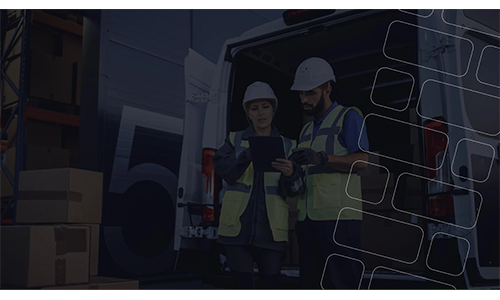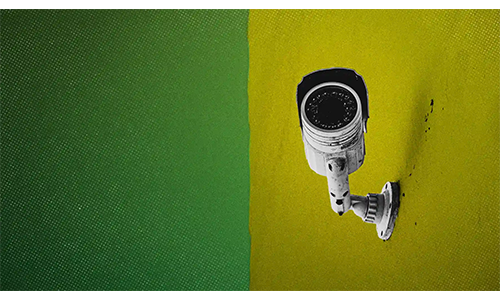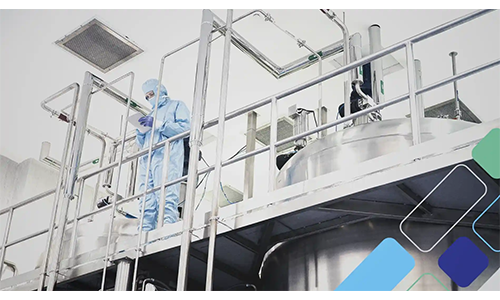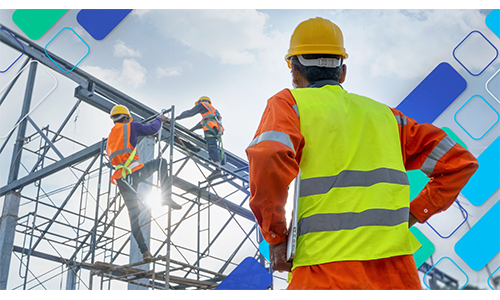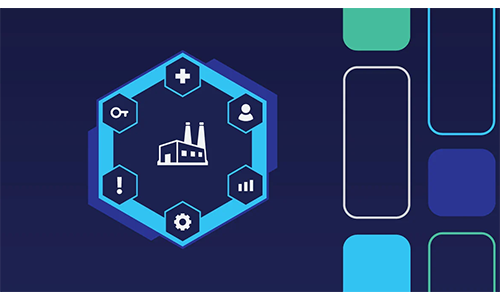When robotics was first introduced into the late-1970s automotive industry, workers across all industries started to worry that their jobs were going to become automated, and they would be out of work.
Since then, the world has been transformed by the rise of the internet and the Industrial Internet of Things (IIoT), which have impacted every facet of our personal and professional lives. In some cases, automation and technology have replaced human workers entirely. You see that more and more every day with the increasing number of self-checkouts at the local grocery story and even in sports journalism.
Wearable technologies have also benefitted our safety in the full range of capacities, occupational safety included. Whether it’s increasingly intelligent machinery, systems and robotics or automated software and online platforms, workplace safety has benefitted from these technological advances, and people are more protected as a result.
Advances in technology and artificial intelligence are improving our productivity as well as occupational safety. In particular, smaller, lighter and more affordable wearable safety technology is becoming an attractive safety solution for occupational hazards that workers face, whichever sector they are in.
These wearables are smart devices that can be integrated and worn with work clothing, such as clipped on a belt, or used with personal protective equipment. Generally, these devices use advanced hardware (e.g., sensors, accelerometers or gyroscopes) that analyzes information (e.g., movement, time, location, heart rate) and a growing list of data categories which the employer can access – with permission from the employee, of course.
On any workday, having an industrial wearable tracking your well-being is a big benefit; they can track valuable health data such as blood pressure. (My Garmin watch is constantly reminding me to move, and it’s actually working.)
Furthermore, during the dark, cold and slippery workdays of winter, these devices can be an invaluable asset for protecting and monitoring vulnerable employees who spend much or parts of their work time alone. These types of employees can be found in almost every industry, including a lab technician working late hours or an agriculture worker in the field.
A 2018 study from research firm Verdantix found that nearly 60% of respondents regard industrial wearables as significant for their safety in the workplace. And, in a 2019 study, researchers found that wearables improved the safety and health of workers on construction sites.
Many of us in the Northern and Western hemispheres face colder temperatures, darker days and icy conditions when working in the winter months. With these arguably increased safety risks, employers can look at the power of safety wearables to protect their team members while collecting some valuable data.
Here are eight ways wearables can help improve worker safety in winter.
Location Tracking
Perhaps the most well-known use of wearable technology is for tracking employees’ locations, sometimes using satellite technology for remote areas. It is also the most controversial, bringing to mind notions of Big Brother always watching over you. However, accurate location tracking could save a worker’s life in an emergency when help must be sent to the right place, right away.
Fatigue Risk Management
For those working long hours or with an injury, sensor technology can monitor vital signs and alert employees and/or employers to possible fatigue risk. Sensors can also help detect if employees do not feel well or are stressed. Especially for those working long hours, wearables that at least make them aware that they may need to take a break or destress can benefit both the emotional wellness of the workers as well as the work itself.
Fall Detection
Slips, trips and falls are a major concern during the winter because of icy walkways and slippery vehicles and equipment. There are a growing number of fall detection devices that will immediately notify employers or managers if workers have fallen and areimmobile or unconscious. Fall detection wearables can call for help even when workers are physically unable to.
Safety Training
Virtual reality headsets are slowly entering the mainstream with similar technology being utilized for safety training with companies, such as VR Vision and the aptly titled Digital Engineering and Magic. Especially during the winter, it may be difficult to access certain outdoor areas for safety training and education. Wearables empower employers to train their team members virtually anywhere to practice safety protocols and procedures, minus the threat of any safety hazards, such as cold temperatures outside.
Environmental Monitoring
When working outdoors and in the elements, people are not always aware of what’s taking place in their surroundings. Wearables can monitor the working environment and send an emergency alert if the working conditions or temperatures are becoming dangerous for employees. This can be very useful in winter as both employees and employers can have a closer pulse on any environmental safety hazards including—of course—extreme changes in temperature, but also extreme weather events, such as record heat levels, forest fires, tornadoes and flash flooding.
Embrace Exoskeletons
The development of exoskeletons has increased over the past decade, spanning from devices that correct posture and ergonomics to more substantial wearables being worn in the construction industry as well as for those with neuromuscular impairments, whereby robotic-looking devices fit the stereotype of the exoskeleton. Wearable exoskeletons not only reduce worker injuries (particularly in the shoulders and spine) but also reduce mistakes from fatigue or strain for a spectrum of different repetitive physical movements in a range of different industries.
Constant Communication
Probably the most important benefit of wearables is maintaining a constant line of communication and connection should anything happen. No matter what types of data the wearable is collecting and communicating, the technology ensures that the vulnerable worker can reach a monitor in an emergency. During the winter—when the weather can be volatile and change quickly—steady, reliable communication is essential for every worker’s safety.
Valuable Feedback
The benefits of wearables can be experienced daily when a dangerous fall and impact is detected, or employee fatigue is managed. However, beyond that, the safety benefits continue with the valuable feedback wearables provide to employers so that they can make any adjustments necessary to improve the conditions of employees’ work environments—and the work itself.
Embrace the Future—and Bundle up
Yes, the robotics and wearables field is an evolving one, but it is already making an impact on occupational safety in industries around the globe. Not only are wearables becoming more compact and advanced, but there is a wearable for almost every safety and health need out there. They are also becoming more cost-effective, which means you don’t need to break the bank to protect your team.
If your team is working outside in the cold, make sure they not only wear weather-appropriate clothing and personal protective equipment, but also take advantage of any available wearable technology to protect your people so they can go home safe at the end of the day.
Gen Handley is a marketing and growth coordinator for SafetyLine Lone Worker, an automated, cloud-based lone worker monitoring service that has helped companies protect remote or isolated workers for more than 20 years. Gen has more than 10 years of freelance writing and marketing experience.
















